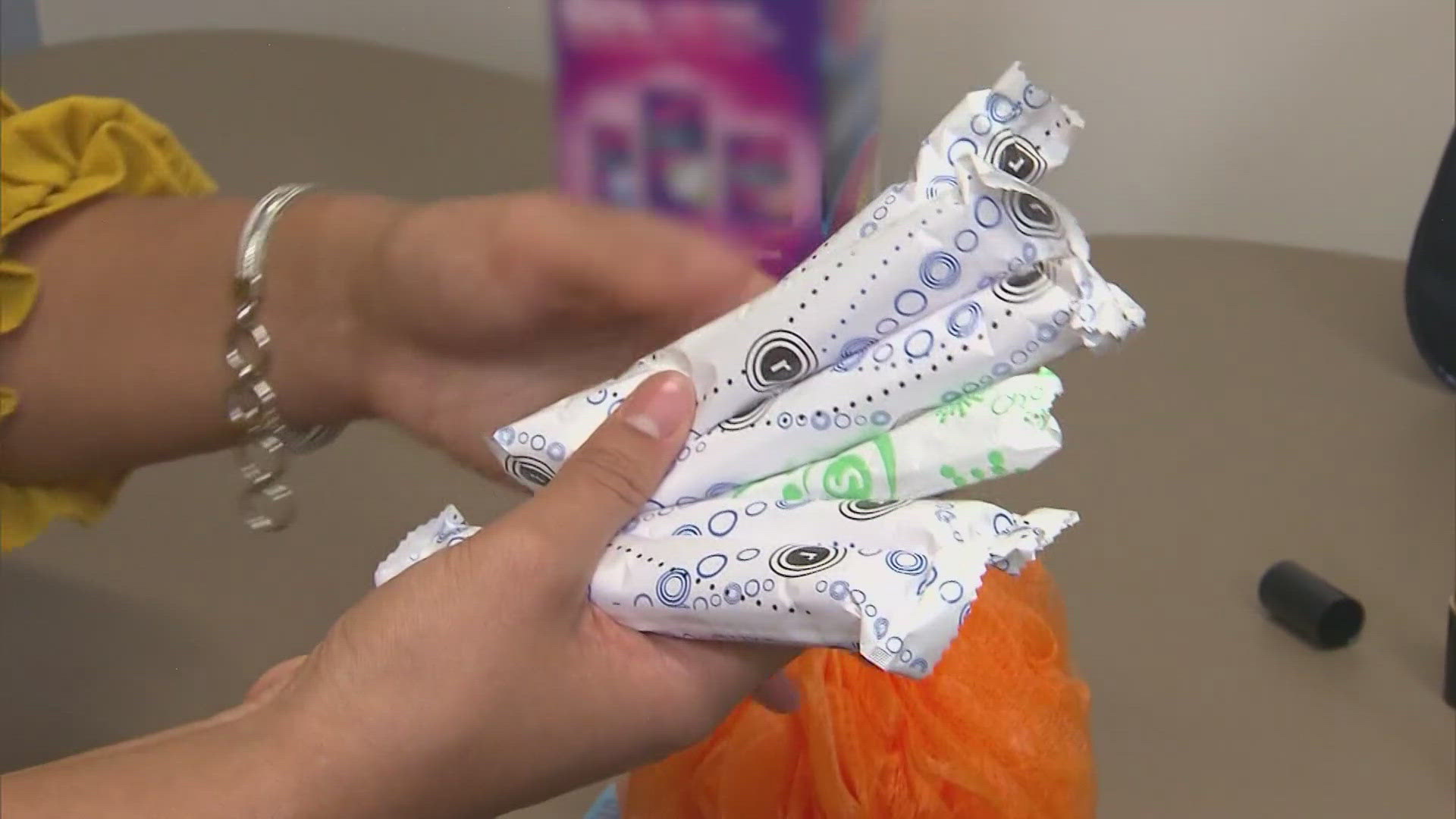BERKELEY, Calif. — A new study led by UC Berkeley researchers found tampons from several major brands can include toxic metals like lead, arsenic and cadmium.
"Despite this large potential for public health concern, very little research has been done to measure chemicals in tampons," said lead author Jenni A. Shearston, a postdoctoral scholar at the UC Berkeley School of Public Health and UC Berkeley’s Department of Environmental Science, Policy, & Management. “To our knowledge, this is the first paper to measure metals in tampons. Concerningly, we found concentrations of all metals we tested for, including toxic metals like arsenic and lead.”
According to UC Berkeley, 50% to 80% of those who menstruate use tampons for several hours at a time, on a monthly basis.
Metals have been found to increase the risk of many serious health conditions, including cancer, dementia, diabetes and infertility. They can also damage the brain, liver and kidneys, as well as the nervous, cardiovascular and endocrine systems. Additionally, metals can influence maternal health and fetal development.
Kathrin Schilling – the co-author of the study and an assistant professor at Columbia University's Mailman School of Public Health – said while we are exposed to low levels of toxic metals at any given time, the study shows that metals are also present in menstrual products and that women might be at a higher risk for exposure when using tampons.
The researchers evaluated the levels of 16 metals in 30 tampons from 14 brands. Those metals were: arsenic, barium, calcium, cadmium, cobalt, chromium, copper, iron, manganese, mercury, nickel, lead, selenium, strontium, vanadium and zinc.
According to the study, the metal concentrations varied by where the tampons were purchased (in the U.S. vs. the E.U./U.K.), whether they were organic or nonorganic and whether they were name brand or generic. However, the researchers found that metals were present in all types of tampons – no category had consistently lower concentrations of all or most metals.
The researchers did find that lead concentrations were higher in nonorganic tampons, but arsenic was higher in organic tampons.
The study notes that metals could make their way into tampons in different ways, including that the cotton material could have absorbed the metal from water, air, soil or a nearby contaminant. Some metals might also be added intentionally during manufacturing as part of a pigment, antibacterial agent, whitener or some other factory process.
Shearston said she hopes manufacturers are required to test their products for metals, especially toxic metals. If not, she said it would be "exciting to see the public call for this, or to ask for better labeling on tampons and other menstrual products."
As of the study's publishing, it's unclear if the metals detected are contributing to any negative health effects. Future research will aim to understand how much of these metals can be absorbed by the bodies of people using tampons and will also measure the presence of any other chemicals in menstrual products.
You can read the full study online.

